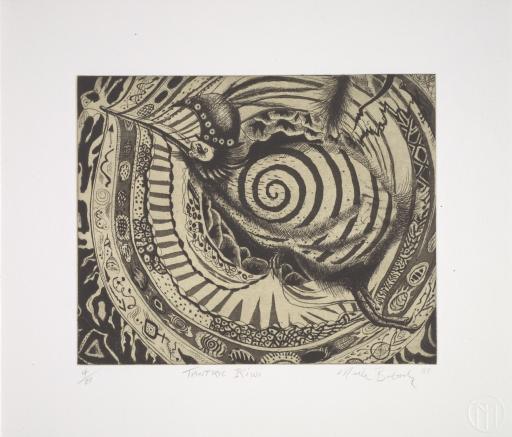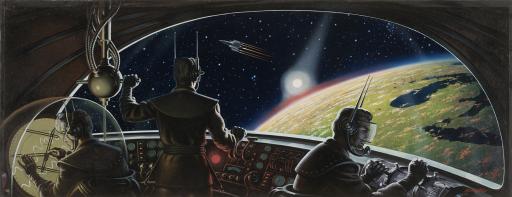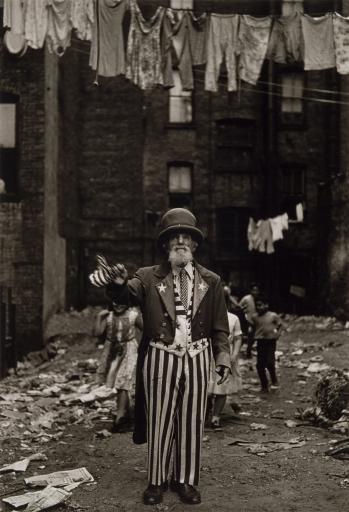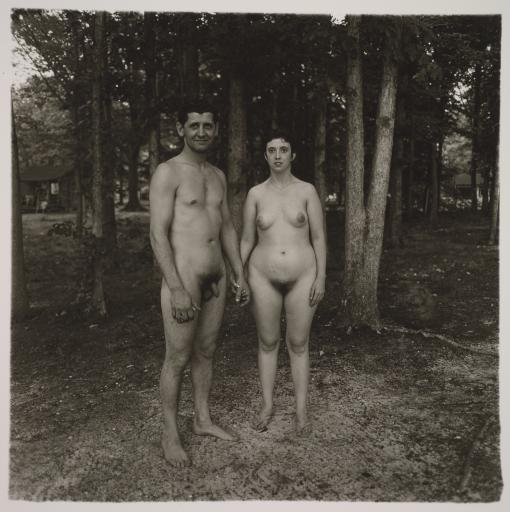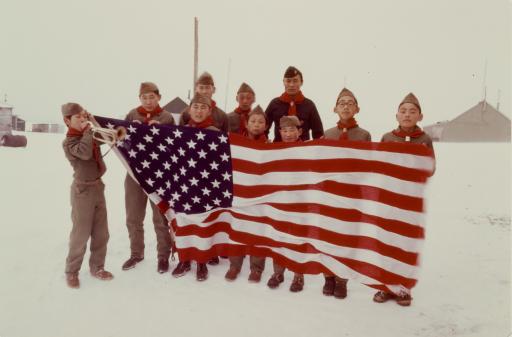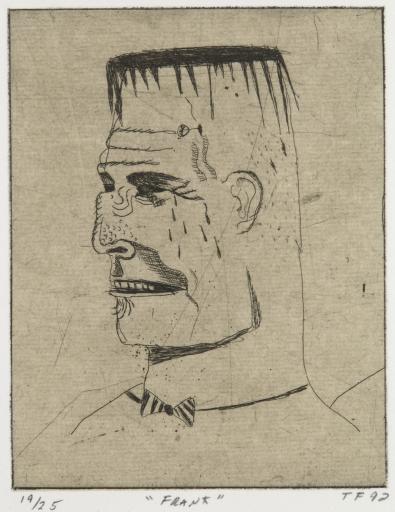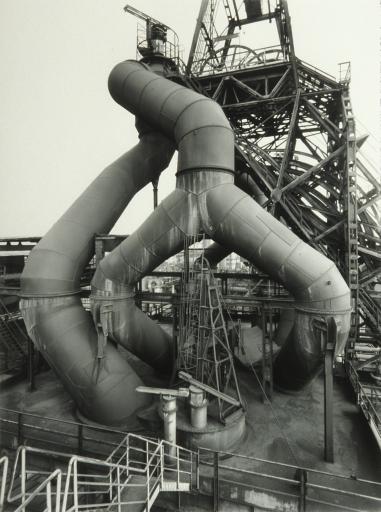Conversation VII: Utopia/Dystopia
Exhibition
Exhibition Overview

Conversation VII: Utopia/Dystopia
Olena Chervonik, curator
January 30, 2010–May 23, 2010
20/21 Gallery, Spencer Museum of Art, University of Kansas, Lawrence, Kansas
Works of art
Nick Bubash; Big Cat Press; Teresa Mucha
The Warbler,
1998–1999
Nick Bubash; Big Cat Press; Teresa Mucha
Tiger Finch, Listening,
1999
Nick Bubash; Big Cat Press; Teresa Mucha
Nick Bubash; Big Cat Press; Teresa Mucha
Song Bird,
1998
Nick Bubash; Big Cat Press; Teresa Mucha
Zoot Horn Cormorant,
1999
Nick Bubash; Big Cat Press; Teresa Mucha
Tantric Kiwi,
1999
Murray Alcosser
Ynez Johnston
untitled,
1950
Thomas Coleman
Crop Duster,
1964
Constantine Manos
Alex Ebel
N.Y. to Frisco: Minutes by Rocket,
circa 1953
Chesley K. Bonestell
Esquire in New Orleans,
circa 1948
Gervasio Gallardo
untitled (man with file drawers),
circa 1966
Arthur S. Siegel
Right of Assembly,
1939
Diane Arbus
Margaret Bourke-White
Charles Pratt
Housing Development, South Bronx, New York,
mid 1900s
Diane Arbus
Brian Sanderson
Triangulatur,
1988
Jennifer Vogh
Ideal Realities,
1988
Charles Cohan
Untitled Metropolis,
1988
Joseph Masheck
Preliminary Proposal for US Babel-Tower,
circa 1980
Michael Sorkin
Communism Comes to the Coast,
circa 1980
Louis Lozowick
Eugene Carey
Bernhard Becher; Hilla Becher
Blast Furnaces,
1996
Enrique Chagoya; Segura Publishing
George Andrew Tice
Three Amish Girls,
1960s
Duane Michals
Native Alaskan Boy Scouts,
circa 1969
Tony Fitzpatrick; Landfall Press
"Frank",
1992
Bernhard Becher; Hilla Becher
Blast Furnaces,
1996
Bernhard Becher; Hilla Becher
Blast Furnaces,
1996
Bernhard Becher; Hilla Becher
Blast Furnaces,
1996
Bernhard Becher; Hilla Becher
Blast Furnaces,
1996
Bernhard Becher; Hilla Becher
Blast Furnaces,
1996
Eduardo Paolozzi
Eduardo Paolozzi
Twenty Traumatic Twinges,
1970
Eduardo Paolozzi
Philip W. Smith
Shemale,
2004
Georgi Zelma
Sandow Birk
I.C. Editions, a division of Susan Inglett Gallery; Mike Ward; Hugh Stoneman; Paul Noble
A,
2002
I.C. Editions, a division of Susan Inglett Gallery; Mike Ward; Hugh Stoneman; Paul Noble
Paul's Place,
2002
Events
Resources
Audio
Didactic – Art Minute
Didactic – Art Minute
Episode 210
Mar-2010, Olena Chervonik, Director's Intern
I’m David Cateforis with another Art Minute from the Spencer Museum of Art. A current Spencer exhibition, Utopia/Dystopia, brings together works by artists who investigate dimensions of utopian and dystopian thinking in various spheres of modern life. Many of us strive for perfection. We try to better ourselves and the world around us. Whether through educating ourselves, advocating for social causes or simply exercising and eating right, we engage in activities driven by our belief in progress and our desire for improvement. But will we ever arrive at a perfect place? Does such a place exist? The word “utopia” denotes a perfect political, economic, religious, or scientific community. However, the concept is double sided. It may signify an unattainable ideal, thus reflecting the centuries-old anxiety about the improbability of attaining a state of perfection. Featuring some forty works drawn from the Spencer’s permanent collection, the exhibition invites the viewer to contemplate various signs of utopianism, intermingled with dystopian and apocalyptic imagery as a counterweight to utopian enthusiasm. With thanks to Olena Chervonik for her text, from the Spencer Museum of Art, I’m David Cateforis.





